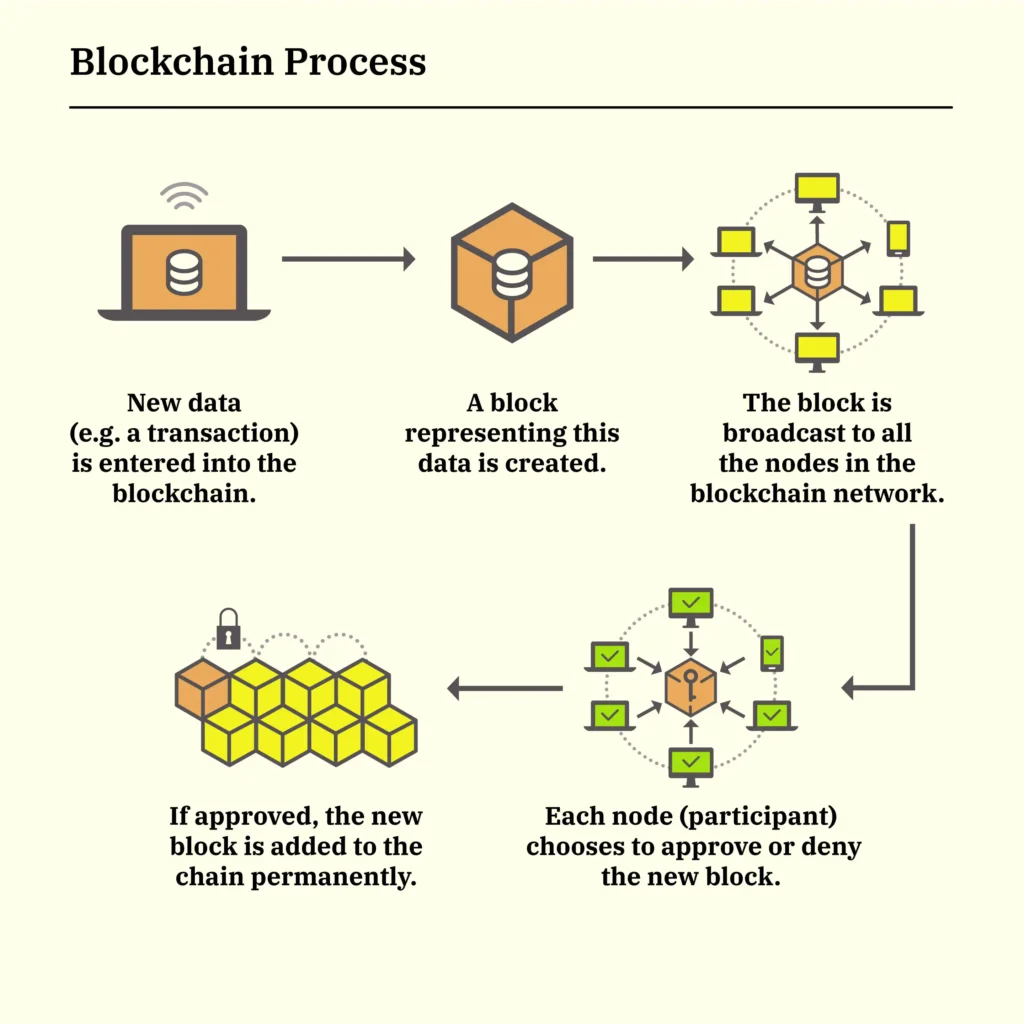In recent years, the term “blockchain” has become a buzzword across various industries, often associated with cryptocurrencies like Bitcoin. However, the applications of blockchain technology extend far beyond digital currencies. This article aims to demystify blockchain, explaining what it is, how it works, and its potential uses.
Understanding Blockchain
At its core, a blockchain is a decentralized, distributed ledger that records transactions across a network of computers. This structure ensures that once data is entered, it cannot be altered retroactively without consensus from the network, making the system highly secure and transparent.
How Does Blockchain Work?
A blockchain consists of a series of blocks, each containing a list of transactions. These blocks are linked together in a chronological chain using cryptographic hashes. Each block includes:
- Transaction Data: Details of the transactions recorded in the block.
- Timestamp: The time when the block was created.
- Cryptographic Hash: A unique identifier that links the block to the previous one, ensuring the chain’s integrity.
When a new transaction occurs, it is broadcasted to the network and grouped into a block. This block is then validated by network participants, known as nodes, through a consensus mechanism. Once validated, the block is added to the chain, and the transaction becomes a permanent part of the ledger.

Core Components of a Blockchain
- Nodes: These are individual computers that participate in the blockchain network. Each node maintains a copy of the entire ledger and follows the network’s consensus protocol. Nodes can be full (storing the entire blockchain) or lightweight (storing only necessary data).
- Transactions: The basic units of operation in a blockchain. Transactions represent the transfer of data or assets and are grouped together to form a block.
- Blocks: Structures that contain a list of transactions, a timestamp, and a cryptographic hash of the previous block. This hash links the blocks together, forming the blockchain.
- Consensus Mechanisms: Protocols that ensure all nodes in the network agree on the current state of the blockchain. Popular mechanisms include Proof of Work (PoW) and Proof of Stake (PoS).
- Cryptographic Hash Functions: Algorithms that take an input (or ‘message’) and return a fixed-size string of bytes. In blockchain, they ensure data integrity by producing unique hashes for each block.
- Smart Contracts: Self-executing contracts with the terms directly written into code. They automatically enforce agreements when predefined conditions are met.
Key Features of Blockchain
Several characteristics make blockchain technology unique:
- Decentralization: Unlike traditional databases managed by a central authority, blockchains operate on a peer-to-peer network where each participant holds a copy of the ledger. This decentralization enhances security and reduces the risk of a single point of failure.
- Immutability: Once data is recorded in a block and added to the chain, it is nearly impossible to alter. This immutability ensures the integrity and trustworthiness of the data.
- Transparency: All participants have access to the entire ledger, promoting transparency and accountability within the network.
Applications of Blockchain
While blockchain is the underlying technology behind cryptocurrencies, its potential applications are vast and varied:
- Supply Chain Management: Blockchain can track products from origin to consumer, ensuring authenticity and reducing fraud.
- Healthcare: Securely storing patient records on a blockchain can enhance data security and interoperability among healthcare providers.
- Finance: Beyond cryptocurrencies, blockchain can streamline processes like cross-border payments, reducing costs and increasing efficiency.
- Voting Systems: Implementing blockchain in voting can enhance transparency and reduce the risk of electoral fraud.
Conclusion
Blockchain technology represents a paradigm shift in how data is recorded, shared, and secured. Its decentralized nature, coupled with features like immutability and transparency, offers numerous advantages across various sectors. As industries continue to explore and adopt blockchain solutions, understanding its fundamentals becomes increasingly important.
